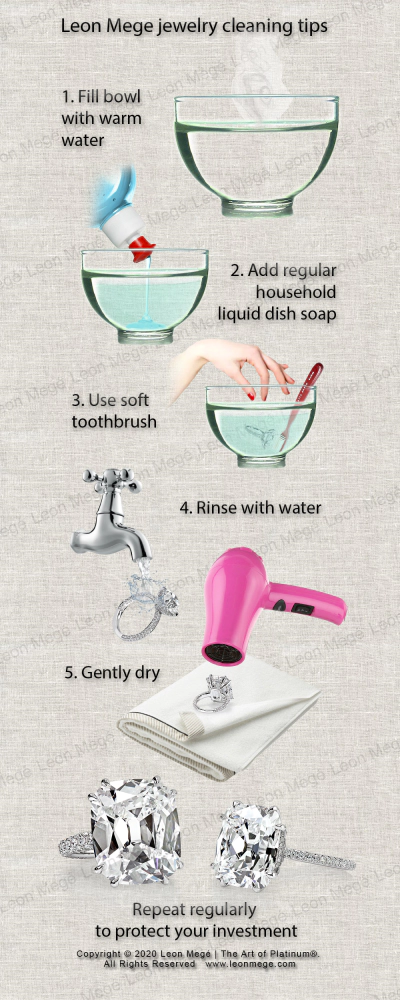The very day you slide a piece of jewelry on your finger, it starts to accumulate some damage. How long a ring is going to last is literally in your hands. Protect your jewels by keeping them clean.
Store jewelry pieces separately in individual pouches to protect them from scratches and chips.
Do not wear jewelry while exercising, swimming, gardening, mechanical bull riding, white-knuckle driving, or other activity involving heavy use of hands.
Minimize exposure to oils, lotions, and cosmetics by applying makeup before putting the jewelry on.
Protect jewelry from extreme temperatures.
Avoid exposure to harsh chemicals, abrasives, nail polish removers, perfumes, or hairspray.
Any gemstone, including a diamond, can chip if hit hard at certain angles. Emeralds, opals, and other stones, such as feldspar (moonstones), are particularly delicate and easily damaged. Keep opals away from direct sunlight. They will dry out and crack.
The basics of cleaning jewelry
Bring your jewelry for an inspection at least once a year to ensure it stays radiant and sparkling. Professional jewelers use ultrasound and steam to clean the jewelry and will check for loose stones after cleaning.
Diamonds have a curious property called lipophilia (attraction to grease) that causes the oily film to spread over the entire diamond surface immediately after it touches the skin. The film traps the dust particles forming a dirt layer that regular cleaning can easily remove.
Diamonds appear one or two color grades lower when dirty, with up to 20% loss of value. Without proper upkeep, they look repulsive instead of dazzling and mystifying.
Best cleaning method - using a soft toothbrush
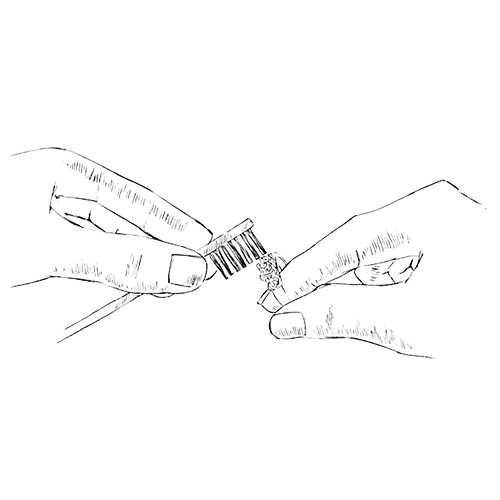
Dissolve a few drops of dishwashing liquid (any brand) in a cup of warm water. Optionally add a few drops of regular household ammonia.
Gently brush jewelry using a soft toothbrush. Try to dislodge the dirt accumulated directly under the stones. Rinse with lukewarm water. Pat with a paper towel or use a hairdryer to dry. Pressurized air can be used for drying water remains. However, canned air cannot remove the greasy film, which is unsuitable for cleaning jewelry.
Regular cleaning prevents the greasy build-up from accumulating under the stone. Once the organic deposits from makeup, lotions, and perspiration are calcified and hardened, removing them becomes a challenge, even for the professional-grade equipment.
Soaking
Routine cleaning (approximately twice a month) will bring the best results. An irregular cleaning, on the other hand, promotes dirt build-up. Soaking your diamond jewelry overnight in water will soften the calcified deposits and make cleaning a breeze.
Stones other than emeralds and pearls are safe to soak overnight. Emeralds are often impregnated with oil. Soaking will remove the oil so that the stone will lose its transparency. Immersing pearls in a water-based solution can disintegrate the knots and strings. Merely wiping the pearls with a soft cloth will do the trick.
Ultrasonic cleaner
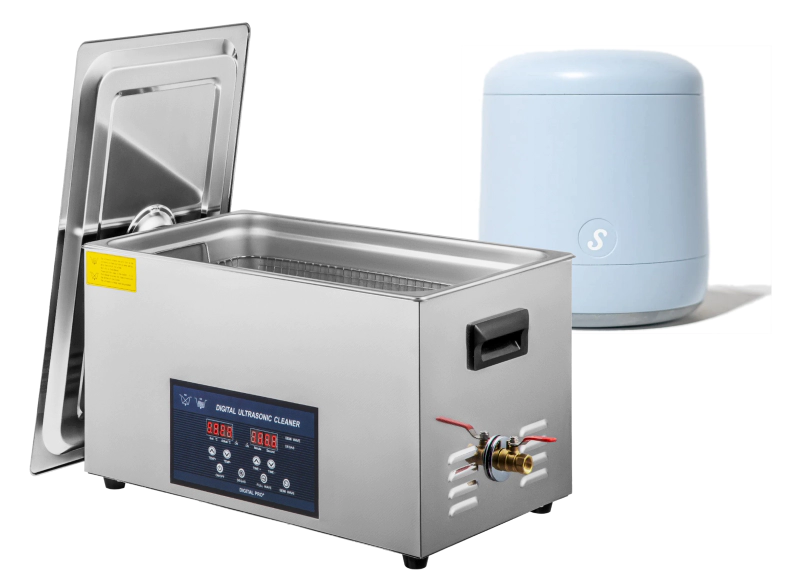
A consumer-grade ultrasonic cleaner is suitable only for special occasions. Using it regularly is not recommended because ultrasound can loosen or even dislodge small stones from the setting. Yet, it is not powerful enough to dissolve the hardened deposits, and grime stuck under the stones.
Two pieces should not be cleaned simultaneously – they will scratch each other. Pieces with flexible joints, such as bracelets, necklaces, or earrings with hinged parts, must be restrained to ensure that separate parts do not touch.
Emeralds, opals, rare gemstones, heavily included, cracked, and fracture-filled stones should not be cleaned in ultrasonic. The internal integrity of a gemstone is a crucial element in deciding to subject the stone to ultrasound.
Professional-grade ultrasonic has enough power to eradicate dirt. However, it is the jeweler’s responsibility to check every stone after the cleaning.
Steam cleaning
An industrial-strength steamer is a standard piece of equipment in every jewelry store or shop. Steamers use water and electric heat to generate pressurized steam.
Industrial steamers are practical and too dangerous for use at home. They are expensive, bulky, and require regular maintenance. Because of their low pressure, consumer-grade steamers are mostly used for drying jewelry after washing.
Most gemstones can tolerate high heat from the steam but will crack from a sudden temperature change. Don’t put freshly steamed jewelry on a cold surface until it cools off.
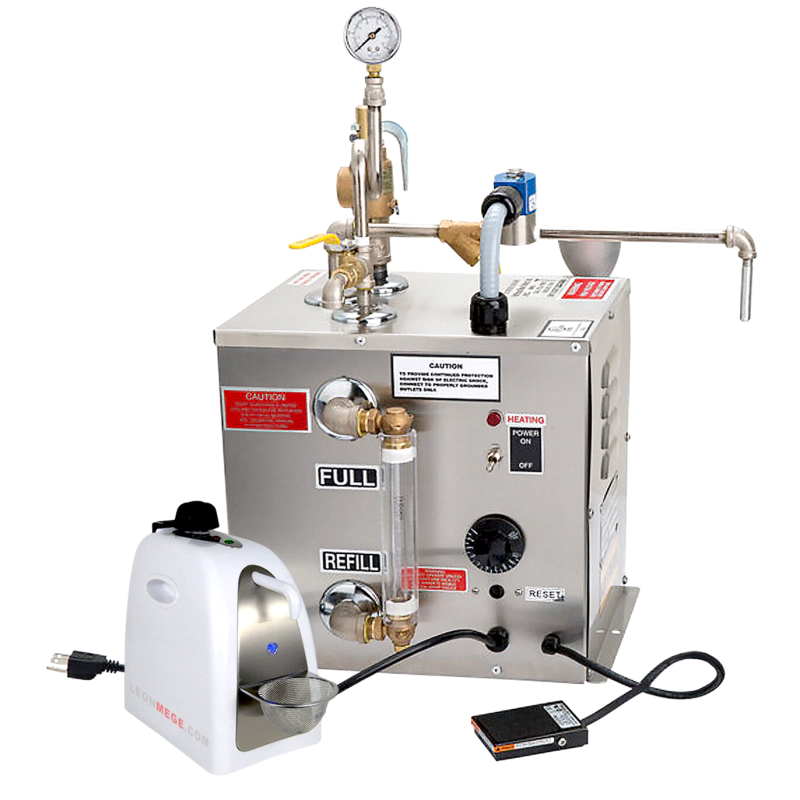
Ionic Cleaner
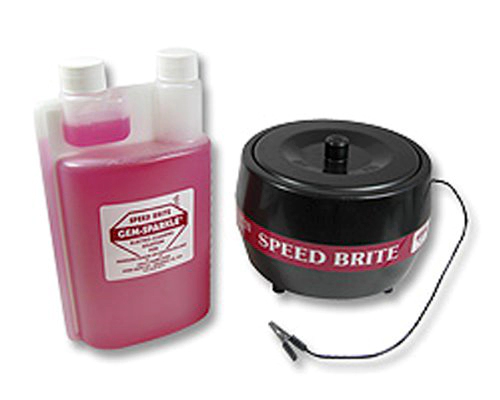
The ionic cleaner is not well suited to clean platinum and diamond jewelry. However, it is useful for removing tarnish from delicate jewelry with pearls and soft stones such as emeralds and turquoise. It runs a mild charge through a piece of jewelry immersed in a liquid cleaner. The process is very similar to electroplating, but the electric current flows in the opposite direction.

